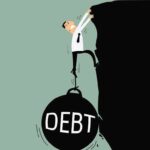In today’s fast-paced economy, saving money is no longer just a good habit – it’s a necessity. With inflation, rising living costs, and uncertain job markets, learning how to save money in 2025 can help you build financial security and achieve your long-term goals. Whether you’re a student, a young professional, or a family provider, these practical money-saving tips will guide you toward smarter spending and better financial planning.
Automate Your Savings
One of the easiest ways to save money in 2025 is through automation. Most banks and financial apps now allow you to set automatic transfers from your checking account to your savings account.
Example:
If you earn $1,000 per month, setting an automatic transfer of $100 into your savings account ensures you save consistently without overthinking it.
👉 Related topics: 50+ Small Business Ideas for 2025: Profitable Opportunities for Aspiring Entrepreneurs
Embrace Subscription Audits
How many subscriptions do you really use? Streaming services, gym memberships, software tools, and online platforms can silently drain your wallet.
Actionable Tip:
- Review your subscriptions every 3 months.
- Cancel anything you haven’t used in the last 30 days.
- Switch to family or group plans when possible.
According to a report by CNBC, the average household wastes over $200 yearly on unused subscriptions.
Use the 30-Day Rule for Purchases
Impulse buying is one of the biggest enemies of saving. In 2025, with online shopping just a click away, the 30-day rule is more important than ever.
How it works:
- When you want to buy something non-essential, write it down.
- Wait 30 days.
- If you still feel it’s necessary, buy it. If not, you just saved money.
Cook at Home More Often
Eating out has become increasingly expensive. Preparing your meals at home not only saves money but also improves your health.
Example:
- Average lunch outside: $8–$12
- Cooking at home: $3–$5
Saving just $5 daily = $150/month = $1,800/year.
👉 You can reinvest these savings into Smart Investment Strategies
Leverage Cashback and Rewards Programs
In 2025, cashback apps and reward-based credit cards have become more advanced. Instead of overspending, use them strategically.
Tip:
- Choose one reliable cashback app (RetailMeNot, fetch, or local options).
- Pay bills or shop online through it to earn rewards.
But remember: only buy what you need – rewards are pointless if you overspend.
Prioritize Emergency Savings
Unexpected expenses can ruin your budget if you’re not prepared. Aim to build an emergency fund equal to 3–6 months of living expenses.
Example:
If your monthly expenses are $600, your target emergency fund should be $1,800–$3,600.
This gives you peace of mind and prevents falling into debt during emergencies.
Adopt Minimalist Living
Minimalism is not about deprivation; it’s about focusing on what truly adds value to your life. Owning fewer, higher-quality items helps you save money and reduces stress.
Action Plan:
- Sell items you don’t use (clothes, electronics, furniture).
- Use platforms like eBay, Facebook Marketplace, or local apps.
- Put the money directly into your savings account.
Invest in Energy Efficiency
Saving money isn’t only about cutting costs – it’s also about making smart long-term investments
Ideas:
- Switch to LED bulbs (saves up to 80% energy).
- Invest in energy-efficient appliances.
- Use smart thermostats to cut utility bills.
According to the U.S.Department of Energy, these small changes can reduce your yearly energy bills significantly.
Practice the “50/30/20 Budget Rule”
This rule is timeless and still powerful in 2025.
- 50% of your income → Needs (rent, bills, groceries)
- 30% → Wants (entertainment, travel, hobbies)
- 20% → Savings & investments
👉 Related topics: How to Boost Your Income and Build Financial Freedom
Saving money in 2025 isn’t about extreme sacrifices – it’s about making smarter decisions. By automating savings, reducing waste, cooking at home, and investing in your future, you can achieve financial stability and freedom. Start small, stay consistent, and remember: every dollar saved today is a step closer to your goals tomorrow.








